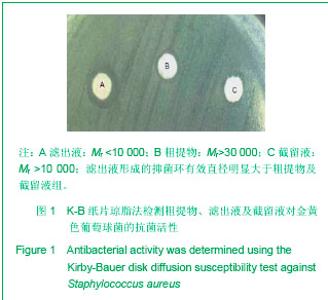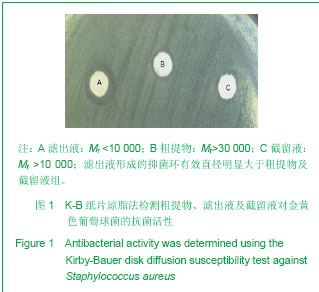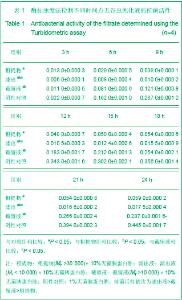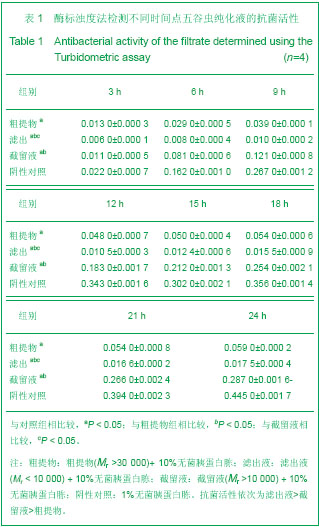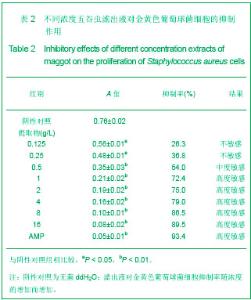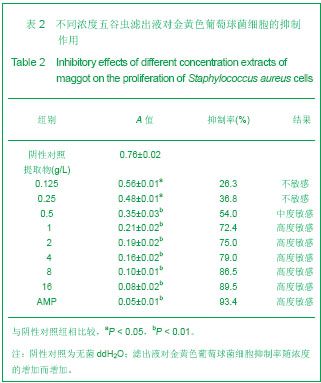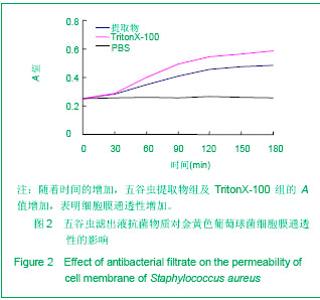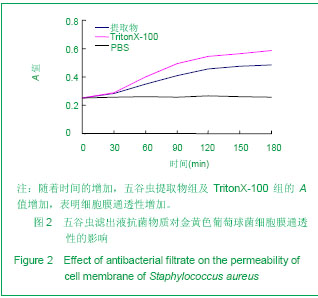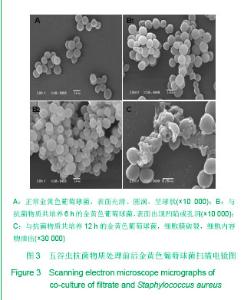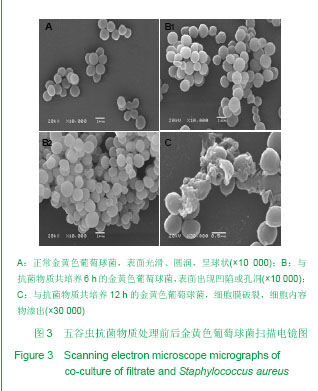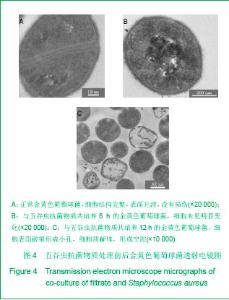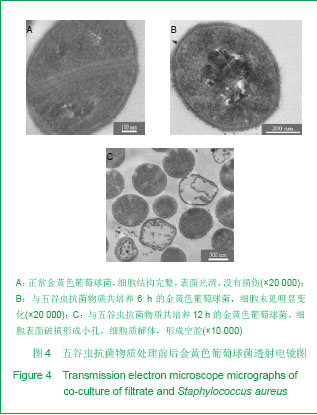| [1] Zhang Z,Wang SY,Diao YP,et al.Zhongguo Zhongyao Zazhi. 2009;34(24):3162-3164.张振,王寿宇,刁云鹏,等.五谷虫及活体蛆虫治疗慢性感染创面的研究进展[J].中国中药杂志,2009,34(24):3162-3164.[2] Wang SY,Lv DC,Wang JN,et al.Zhongguo Shiyong Meirong Zhengxing Waike Zazhi.2005;16(6):349-350.王寿宇,吕德成,王江宁,等.蛆虫治疗糖尿病足溃疡的临床与实验研究[J].中国实用美容整形外科杂志,2005,16(6):349-350.[3] Wang SY,Zhang Z,Diao YP,et al.Zhonghua Zhongyiyao Xuekan.2010;28(4):741-743.王寿宇,张振,刁云鹏,等.活体五谷虫对压疮创面的生物清创技术研究[J].中华中医药学刊,2010,28(4):741-743.[4] Huberman L, Gollop N, Mumcuoglu KY,et al. Antibacterial properties of whole body extracts and haemolymph of Lucilia sericata maggots. J Wound Care. 2007;16(3):123-127.[5] Daeschlein G, Mumcuoglu KY, Assadian O,et al. In vitro antibacterial activity of Lucilia sericata maggot secretions. Skin Pharmacol Physiol. 2007;20(2):112-115.[6] Steenvoorde P, Jukema GN. The antimicrobial activity of maggots: in vivo results. J Tissue Viability. 2004;14(3):97-101.[7] Tantawi TI, Gohar YM, Kotb MM,et al. Clinical and microbiological efficacy of MDT in the treatment of diabetic foot ulcers. J Wound Care. 2007;16(9):379-383.[8] Nigam Y, Bexfield A, Thomas S, et al. Maggot therapy: the science and implication for CAM. Part II: maggots combat infection. Evid Based Complement Alternat Med. 2006;3(3): 303-308.[9] Wang SY,Lv DC,Wang JN.Zuzhi Gongcheng yu Chongjian Waike Zazhi. 2005;1(6):344,360.王寿宇,吕德成, 王江宁. 蝇蛆分泌物提取液对感染创面抗菌作用的初步研究[J].组织工程与重建外科杂志,2005,1(6):344,360.[10] Wang SY. The healing and antibacterial function research of maggot secretion on the ulcer area. The Seventh International Conference on Biotherapy. Seoul, Korea, Special Speech. 2007;21-24:109.[11] Cerovsky V, Zdarek J, Fucik V,et al. Lucifensin. The long-sought antimicrobial factor of medicinal maggots of the blowfly Lucilia sericata. Cell Mol Life Sci 2010;67:455–466.[12] Wang SY,Lv DC,Wang YY,et al.Dalian Yike Daxue Xuebao. 2008;30(1):90-93.王寿宇,吕德成,王媛媛,等. 医疗用五谷虫的制备技术研究[J].大连医科大学学报,2008,30(1):90-93.[13] Marri L, Dallai R, Marchini D. The Novel Antibacterial Peptide Ceratotoxin A Alters Permeability of the Inner and Outer Membrane of Escherichia coli K-12. Current Microbiology. 1996;33: 40-43.[14] Bexfield A, Nigam Y, Thomas S, et al. Detection and partial characterization of two antibacterial factors from the excretions/secretions of the medicinal maggot Lucilia sericata and their activity against methicillin-resistant Staphylococcus aureus(MRSA) . Microbes and Infection. 2004; 6: 1294- 1304 .[15] Huberman L, Mumcuoglu KY, Gollop N,et al. Antibacterial substances excreted by the maggot of the greenbottle fly, Lucilia Sericata . Sixth International Conference on Biotherapy. 2003;(16-20):27-289.. [16] Huberman L, Mumcuoglu KY, Gollop N,et al. Antibacterial substances of low molecular weight isolated from the blowfly, Lucilia sericata. Medical and Veterinary Entomology. 2007;21: 127-131.[17] Kerridge A, Lappin-Scott H, Stevens JR. Antibacterial properties of larval secretions of the blowfly Lucilia sericata. Medical and Veterinary Entomology. 2005;19:333-337. |
